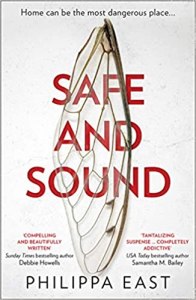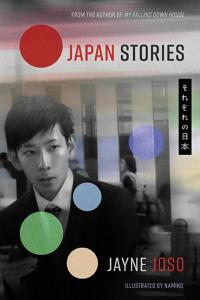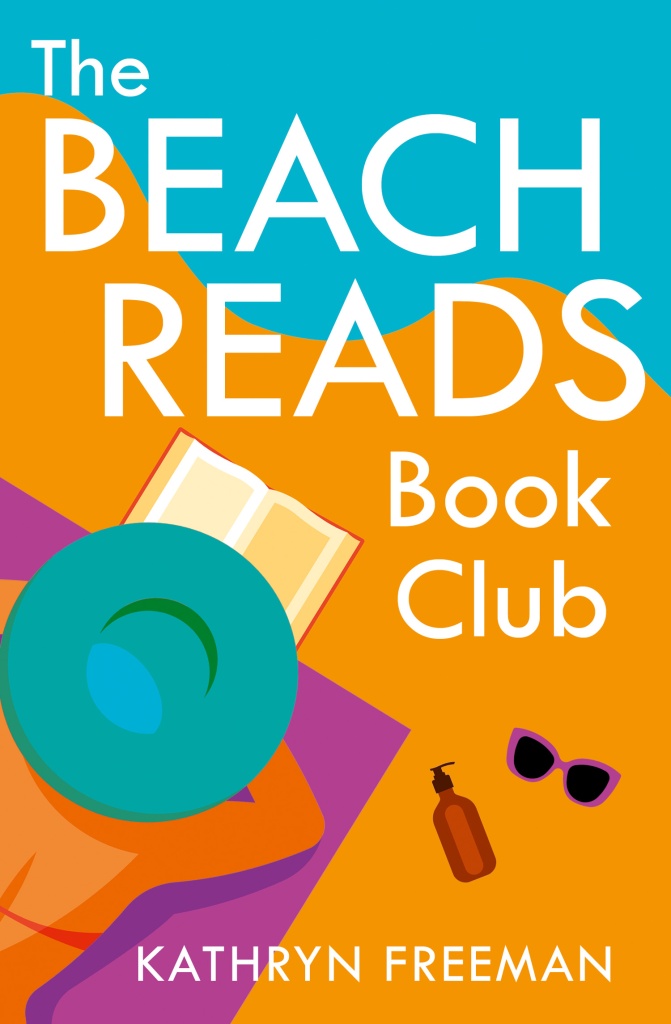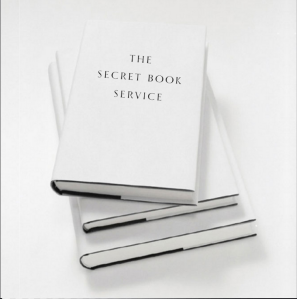The original inspiration was an ammonite that’s existed in my parents’ house ever since I can remember. I think they found it on a beach in Dorset before I was born. I wanted to write about the recent history of something prehistoric – ie, how it features in the lives of a group of characters, and connects them in some way. This led to the idea of setting the novel in an archaeological ‘institute’, which became The Royal Institute of Prehistorical Sciences (acronym, RIPS – I’m a bit of a sucker for acronyms…) Over various drafts, the ammonite morphed into a piece of pottery from the Beaker People era – the ammonite wasn’t ‘speaking’ to me (just as Sybil was finding with various ‘found objects’ in her poetry-writing classes!), whereas the chipped cup led to a lot more intrigues, particularly when Sybil begins to clash with her old adversary Helen.
Like everyone else over the past couple of years I’ve been dreaming about travel, ideally with my family, but maybe spending a few days on my own – and somewhere hot and a long way away, like Argentina or Santiago. Wherever there are good museums and cinemas.
Music is my main relaxation – there’s almost nothing I won’t listen to, from Bach to Desmond Dekker to Gorillaz. I think my teenage children have had some influence on my taste recently, too (almost certainly to their embarrassment!) Anyway, music and cooking are my favourite combination. Also, I need to see friends for coffee at least twice a week to feel properly happy.
Ruth kindly answered a few of my questions.
Hidden within the confines of the Royal Institute of Prehistorical Studies, Sybil is happy enough with her work – and her love life. Then to her dismay, her old adversary, assertive and glamorous Helen Hansen, is appointed Head of Trustees. To add insult, Helen promptly seduces Sybil’s boyfriend. Betrayed and broken-hearted, Sybil becomes obsessed with exposing Helen as a fraud, no matter the cost.
2. What inspired the book?
1. Tell us a little about The Snow and the Works on the Northern Line.
I think I’d like to be asked about my character Jane, the institute’s receptionist in The Snow and the Works on the Northern Line. At one point in the novel I liken her to Mary Anning, in her quiet discovery of something important in the midst of a lot of melodrama and pontificating (which I think must be what Mary Anning experienced, at a time when women’s findings were so often dismissed or their significance diminished.) The whole novel is about things lost and found, really – that’s what underlies the human squabbles and oversights.
I don’t think I could only read one book for the rest of my life because I think I’d end up a bit tunnel visioned, and start to see the world from an odd perspective. Different books appeal to me at different times. Having said that, I do have a lot of books I return to, like Russell Hoban’s Turtle Diary or Lorrie Moore’s Like Life. They’re kind of touchstones for me – both such wonderful examples of the way small, unorthodox things matter in writing (as in life). I think pretty much all the books I’ve loved have humour in them too, whether subtly woven-in or more intentionally comic. Nora Ephron’s Heartburn is fabulous (an example of comedy being ‘tragedy plus time’, I suppose) and Penelope Fitzgerald’s The Bookshop manages to be simultaneously heartbreaking and very funny. Both are brilliant. I’m also just relieved there are so many amazing books out there that are brand new to me. At the moment I’m reading Talent by Juliet Lapidos, which I came across in the library the other day. I’m enjoying it a lot so far. It’s very funny and coolly observed.
Ruth Thomas is the author of three short story collections and two novels, as well as many short stories which have been anthologised and broadcast on the BBC. The Snow and the Works on the Northern Line is her third novel. Her writing has won and been shortlisted for various prizes, including the John Llewellyn Rhys Award, the Saltire First Book Award and the VS Pritchett Prize, and long-listed for the Frank O’Connor International Short Story Award. She lives in Edinburgh and is currently an Advisory Fellow for the Royal Literary Fund.
One of her colleagues suggests she takes up poetry-writing as an outlet for her sorrows, and when Sybil is asked to write a poem about ‘a found object’, her discovery of a chipped teacup begins to unlock various half-hidden memories and correlations with her work at the institute – as well as ways to seek revenge.
The other thing that’s surprised me is how dynamic a writer has to be at all stages in the novel’s life, not just the writing stage. I once assumed you could just hand all the publicity over to someone else – I probably had vaguely grande dame visions about it all. This was perhaps more the case twenty-odd years ago but these days you really have to be quite dynamic and ‘go-getting’, and also not afraid to make a fool of yourself on social media.
3. Are you a plan, plan, plan writer or do you sit down and see where the words take you?
Ruth Thomas is the author of The Home Corner and Things to Make and Mend. Her latest novel, The Snow and the Works on the Northern Line, was published by Sandstone Press on 7 January 2021.
You can buy The Snow and the Works on the Northern Line here. (Please note this is affliliate link so I may make a few pence if you buy a copy. Other retailers are available).
5. What do you do when you aren’t writing? What do you do to relax and get away from it all?
I think I’m an edit, edit, edit writer. For me a lot of the process (and most of the fun) is about re-drafting. With my short stories, I almost always begin with an image or a bit of dialogue and see where it leads, before re-visiting it in a second draft. I’m definitely a fan of what Paul Klee said (‘a dot is a taking a line for a walk’) which I think applies as much to writing as it does to drawing. I’ve had to interpret this idea differently for novel-writing, though – when I was writing my first novel, my attempts to take lines for walks ended up in a lot of cul de sacs. I realised I was going to need a plan – or at least keep a basic plot in my head. For ‘The Snow’, I wanted to place a troubled young woman into a rarefied, quite up-tight institution and see where that led – however, I realised that Sybil’s existential dilemmas were not going to be enough on their own: she was going to need something more to rail against. When I introduced Helen as a foil, all kinds of dramas and back-stories began to emerge which I hadn’t initially thought of.
Each time I’ve had a book published, the process has been different – though I’ve begun to wonder if there’s a pattern emerging as far as my novels are concerned – ie, novels 1 and 3 took forever to write whereas novels 2 and 4 only took about a year… maybe the momentum of having one novel published spurred me on a bit for the one that followed (that’s my theory, anyway!)
4. Having been through the publishing process, is there anything about the process of creating a novel that surprised you?
I was once pretty cagey about showing anyone a manuscript before I felt it was absolutely ready, but in the past few years I’ve become less secretive (certainly once I’ve written a complete first draft) and I think that’s a good thing. You can otherwise get to a point where you can’t see the wood for the trees. When I showed ‘The Snow’ to my agent Georgia Garrett she was able to question the logic (or lack of it!) in certain scenes, where I was probably too close to it. Her input was fantastic, at a stage where some of the plotting was getting a bit head-achey. I hadn’t quite realised before, that although nine-tenths of a novel is in a writer’s head, a proportion of it belongs to other people in the production process.
The novel features Sybil, a young woman struggling with heartbreak and working as a cataloguer at ‘The Royal Institute of Prehistorical Studies’ (a fictional place I located in Greenwich.) Sybil’s boyfriend has left her for her old nemesis and former university tutor, the glamorous Helen Hansen, and Sybil spends her days staring out across Greenwich Park and wondering how on earth this could have happened. Apart from anything else, she’s having to deal with the consequences of a recent physical injury (a blow to the head while skating at Streatham Ice Rink).
About the Book
About the Author
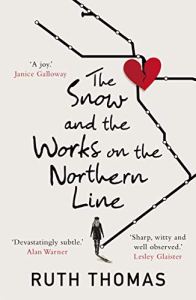
7. I like to end my Q&As with the same question so here we go. During all the Q&As and interviews you’ve done what question have you not been asked that you wish had been asked – and what’s the answer?
6. If you could only read one book for the rest of your life which book would it be?


